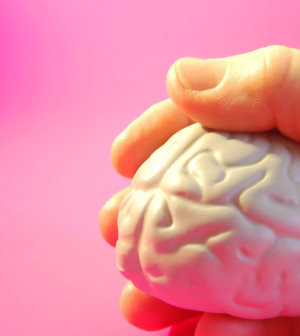- Skip Storing This Everyday Product in the Fridge Door
- Green Tea + B3 Pairing May Boost Brain Health
- Navigating Your Midlife Crisis: Embracing New Possibilities
- City Raccoons Showing Signs of Domestication
- Mapping the Exposome: Science Broadens Focus to Environmental Disease Triggers
- One Week Less on Social Media Linked to Better Mental Health
- Your Brain Changes in Stages as You Age, Study Finds
- Some Suicide Victims Show No Typical Warning Signs, Study Finds
- ByHeart Formula Faces Lawsuits After Babies Sickened With Botulism
- Switch to Vegan Diet Could Cut Your Greenhouse Gas Emissions in Half
Back Pain Patients Seek Pain Relief First, Mobility Second


Pain relief is a greater concern than mobility for people with a common form of lower back pain known as lumbar spinal stenosis, a new study indicates.
When asked to choose between a treatment that would reduce discomfort and one that would help them stand and walk, the vast majority of patients wanted to ease their pain, the researchers found.
“There has long been a debate in the medical community over striking the right balance between pain relief and physical function,” said the study’s lead author, Dr. John Markman, director of the Translational Pain Research Program in the University of Rochester Department of Neurosurgery in Rochester, N.Y.
“While physicians have leaned toward the need to increase mobility, this study shows that patients have a clear preference for pain relief,” Markman said in a university news release.
The researchers explained that lumbar spinal stenosis occurs when the vertebrae, discs, joints and ligaments of the spinal column break down, causing the spinal canal to narrow. This compresses nerve roots, which leads to pain, tingling and numbness in the lower back, buttocks and legs. Most patients with this condition are in pain when they stand or walk.
Surgery can help reduce pain and help people move around with greater ease, but not all patients are candidates for a surgical procedure. Steroids injected into the spinal column can bring pain relief, but only temporarily.
The study’s authors focused on nearly 270 patients who had trouble standing and walking and suffered from chronic back pain associated with lumbar spinal stenosis. The participants were asked to choose between a therapy that reduced their pain and one that would enable them to stand and walk. Nearly 80 percent of the patients said they would rather have relief from their pain than greater mobility, the study published recently in Neurology found.
“Even the patients who could not stand long enough to pick up a letter from their mailbox or wash the dishes after dinner chose pain relief,” said Markman.
The authors pointed out patients are playing a greater role in setting new standards for pain relief, demanding new medications that are both safe and effective.
“This study convincingly demonstrates the need to prioritize pain relief because that is what patients want,” Markman said.
More information
The U.S. National Institute of Neurological Disorders and Stroke provides more on lower back pain.
Source: HealthDay
Copyright © 2025 HealthDay. All rights reserved.










